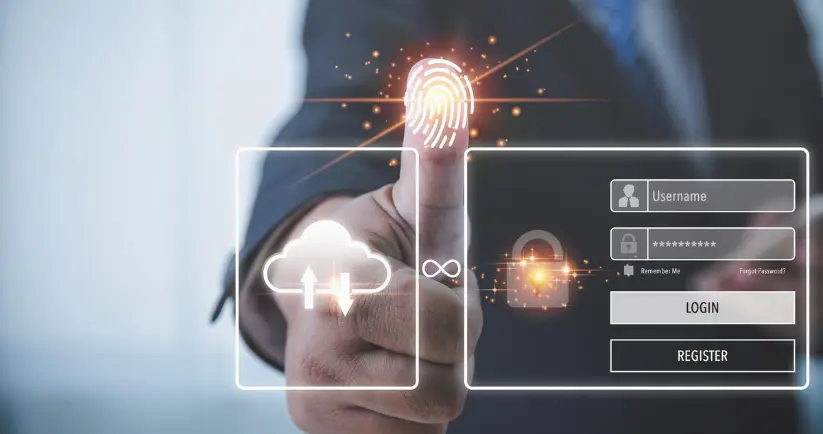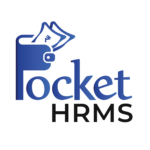
Biometric vs Cloud-based Attendance System: Which Is Better?
Table of Contents

Reading Time: 6 minutes
Tracking employee attendance is fundamental for every organisation. From any Startup to big MNCs, employers track employee attendance to manage their workforce effectively. For managing remote employee attendance, always meeting attendance policies is also mandatory. And all of that depends on sound attendance software. The two modern approaches are, biometric attendance systems and cloud-based attendance systems.
Employers can use both the biometric and cloud-based systems for attendance management. Moreover, they can have different cloud-based systems that still use the biometric verification method. Often, organisations face challenges about selecting which one is best for tracking, as each has its own advantages, limitations, and ideal use cases.
In this blog, we’ll break down both, compare them in depth, and help you decide which may be better for your organisation.
What is Biometric Attendance Systems?
A biometric attendance system is software that tracks employee attendance through physical traits, such as fingerprints, facial features, or iris scans. The system first enrols the biometrics of every individual by scanning and storing their unique biological data, then compares live scans with this stored data to verify identity and record check-in/check-out times.
What is Cloud-based attendance system?
On the other hand, a cloud-based attendance system is a cloud-based SaaS platform that primarily stores and manages employee attendance data, enabling employers to track employee working hours, manage leaves, and generate reports using web browsers, mobile apps, and other digital tools such as the Google Maps API, Power BI, or Tableau. On-site employees or the remote ones can use the cloud-based system through internet connectivity.
Key Advantages of Biometric Attendance Systems
Biometric systems offer several significant advantages, particularly in environments where identity verification, security, and accuracy are paramount. An organisation can maintain a strategic pipeline of employee attendance systems. In this section, we are going to specify what exactly the biometric attendance management system.
1. Reducing Fraud Punching like Buddy Punching
A biometric system first captures and stores the employee’s biometric information, such as fingerprints, facial images, and iris scans. Then, when the employees perform their daily tasks, the system cross-checks using sensors. So it is too much for one employee to clock in for another. This reduces time theft and ensures that attendance records accurately reflect reality.
2. Maintain Accountability and Discipline
The biometric attendance system verification helps employers improve punctuality and reduce abuse of lax policies. Employees usually behave more responsibly when the system is robust. Moreover, if any employees forget to attend their biometric attendance, the system enables attendance regularisation.
3. Inbuilt Robust Security
Biometric systems (especially well-implemented ones) can be more secure than card-swipe or badge-based systems, which are vulnerable to loss, sharing, or misuse. Biometric data, when properly encrypted and stored, provides an additional layer of security. It keeps your workplace safe while maintaining a clear record of employee movements within office premises.
4. 100% Accurate Time Capture
The biometric attendance capture takes no time while taking biometrics and precisely saves for future calculations. Many futurestice HRMS software solutions, along with the attendance tracking software, come with a biometric tracking option for accurately capturing employees’ performance. Moreover, the system features check-in and check-out capabilities, which are tracked in real-time, helping HR avoid discrepancies in attendance records.
5. Seamless Payroll Integration
A biometric system in attendance management software ensures a smooth integration of attendance software and payroll systems. It accurately captures attendance, including punching in and punching out, as well as tracking late marks, making salary calculations effortless and error-free. It automatically accounts for late marks, leaves, and overtime, ensuring that employees are paid accurately and on time.
6. Compliance Made Easy
Pocket HRMS maintains proper attendance logs and records to help companies comply with local labour laws and audit requirements. Biometric tracking ensures all attendance data is tamper-proof and verifiable.
Key Advantages of Cloud-Based Attendance Systems
After the biometric system, we will now discuss the benefits the company receives from integrating with a cloud-based attendance system.
➔ Real-time Data Access
The cloud-based attendance system provides instant access to mark and analyse employee attendance and generate reports.
➔Enhanced Accuracy
The cloud-based attendance software ensures accuracy during the capture of employee attendance and provides a precise attendance report for generating payroll based on accurate attendance records.
➔ Cost Effectivity
The cloud-based attendance system not only captures and stores the employee attendance precisely, but also analyses it for a smooth payroll announcement.
➔ Smooth Integration
The cloud-based attendance system ensures a smooth integration with the HR system and other payroll software. So that HRs and other higher management don’t have to spend long hours gathering data across different platforms.
➔ Streamlined Compliance
A cloud-based attendance system supports the labour regulations and internal policies. Therefore, companies don’t have to consider labour law updates separately for employee attendance tracking.
Biometric vs. Cloud-based attendance system
Here is the difference between cloud-based attendance and biometric attendance.
1. Definition
➔ Biometric Attendance System:
The Biometric attendance system becomes effective by utilising unique physical characteristics, such as fingerprints, facial recognition, or iris scans, to verify an employee’s identity and mark their attendance.
➔ Cloud-based Attendance system
However, the cloud-based attendance system is an internet-based tool that ensures employees mark their attendance using a web portal, mobile apps, or integrated devices connected to the cloud.
2. Workability
➔ Biometric Attendance
In biometrics, employees use fingerprint scanners and other methods, such as iris attendance capture, which provide biometric attendance detectors for the workplace.
➔ Cloud-based Attendance
In cloud-based attendance techniques, employees can mark their attendance using a mobile or web application through GPS and geofencing, enabling remote access detection from any location.
3. Data Storage
➔ Biometric Attendance
Attendance data is stored locally within the device’s internal server.
➔ Cloud-based Attendance
Attendance data is stored securely in the cloud server, making it more effective for real-time syncing, carrying backups and anytime access.
4. Smooth Accessibilities
➔ Biometric Attendance
In biometrics, employees should be physically present to mark their attendance.
➔ Cloud-based
In cloud-based attendance, employers can connect with remote employees as employees can log attendance from anywhere using the internet.
5. Cost Effectiveness
➔ Biometric Attendance
For biometric, companies need highly maintained in-office attendance marking setups like biometric scanners or iris scanning devices.
➔ Cloud-based Attendance
In cloud-based attendance management, installing GPS facilities is the only option as it offers lower upfront investment.
6. Maintenance
➔ Biometric Attendance
For biometric attendance, companies require regular hardware maintenance, including cleaning, calibration, and replacement.
➔ Cloud-based Attendance
In cloud-based attendance, maintenance is comparatively low as there is only an upgraded cost that the service provider manages.
7. Security Concerns
➔ Biometric Attendance
Biometric Attendance ensures physical verification, which reduces proxy attendance, but raises privacy concerns regarding the storage of biometric data.
➔ Cloud-based Attendance
Cloud-based attendance performs data encryption with multi-factor authentication, which helps protect attendance data on the cloud servers.
Which is Better?
Both biometric and cloud-based attendance systems are essential for companies, just as they are for their employees. However, if we take a look precisely, we can categorise both attendance management types from the employee’s perspective and the employer’s perspective. Those are,
➔ Employee’s Perspective
For the employees, a cloud-based attendance system is more flexible and transparent. It ensures cloud-based attendance, allowing employees to mark their attendance from anywhere they work. Basically, for the remote employees, it is a relief, as they can reach a wider audience. It also minimises manual errors and gives employees the confidence that their attendance data is always accurate and accessible.
➔ Employers’s Perpective
From the employer’s perspective, a biometric attendance system offers greater control and authenticity, as it prevents proxy attendance and ensures that only verified employees mark their presence. However, when it comes to managing multiple locations, flexible work setups, or remote teams, a cloud-based attendance system becomes the more intelligent choice.
End Note
Both the biometric and cloud-based attendance systems serve two entirely distinct purposes: one ensures flexibility in marking attendance, while the other provides a strict record of physical presence in the workplace. The modern organisation, where remote employment is also available, they are aligned with both categories. On one side, the cloud-based attendance system ensures GPS-based attendance tracking for remote employees; on the other hand, biometric attendance helps employers track on-site employee attendance through a physical punch system. Both cloud-based attendance management systems strike the perfect balance between accuracy, accessibility, and efficiency, redefining how workplaces track and manage attendance in the digital era.








